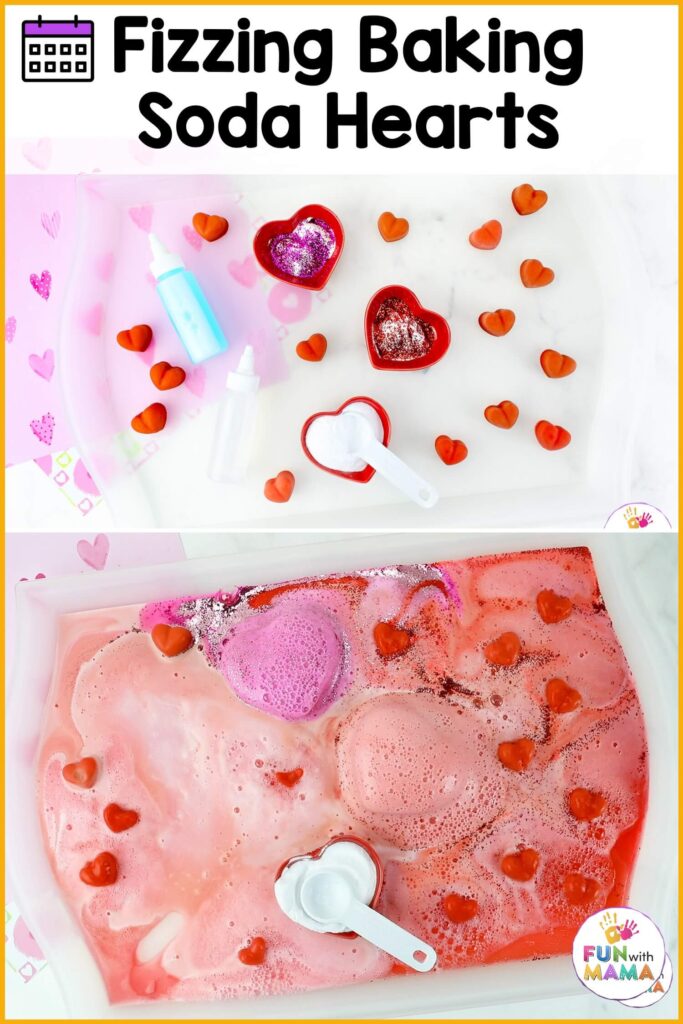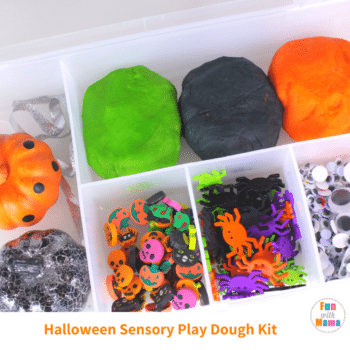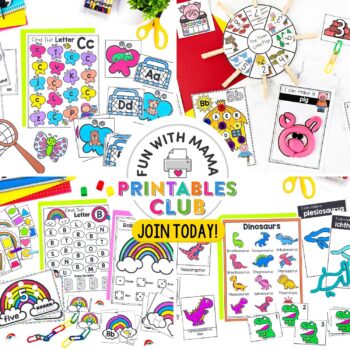This easy Baking Soda Hearts science experiment is a straightforward Valentine’s Day experiment that combines STEM and hands-on messy play. It’s one of our favorites! Use it to help learn about simple chemical reactions in a fun way. All you need is a few household ingredients, and your kids will be fizzing with excitement!

Video
Watch our Valentine’s erupting hearts science experiment come to life in this exciting demo. It’s a lot easier than you could ever imagine!
Valentine’s Day Science Experiment
Your kitchen supplies are a secret portal into a world of simple science. You can create easy science experiments that don’t break the bank by using household ingredients. Your students will love learning about the wonders of baking soda and vinegar with this Erupting and Fizzing Hearts experiment, as they witness the magic of reactions unfolding right before their eyes.
You can cover topics like the states of matter (liquid, solid, gas) and chemical reactions. This particular experiment is about a reaction between an acid (vinegar or acetic acid) and a base (baking soda or sodium bicarbonate).
If your kids love watching things explode or react, I recommend these acid-base reaction experiments to try out next:
- Lemon Volcano Science Experiment for Kids
- Baking Soda And Vinegar Reaction
- Colorful Fizzing Candy Canes
Supplies
- Baking soda
- Water
- Vinegar
- Dishwashing liquid
- Food coloring (pink and red)
- Dropper or squirt bottle
- Large bowl
- Glitter (optional)
- Heart bowls
- Heart ice tray
Erupting and Fizzing Hearts Experiment Setup
This experiment details how to make erupting hearts and fizzing hearts. You can choose whether to create erupting hearts, fizzing hearts, or both. It’s a minimal prep Valentine STEM activity that requires less than 10 minutes!
Prep

Add 3/4 cup of baking soda into a large bowl. In a separate bowl, mix just over 1/4 cup of water with a few drops of red food coloring. Finally, combine the baking soda with the colored water mixture and stir well.

Pour the mixture into a heart-shaped ice tray mould and freeze overnight.
Set-Up

The next step is to set up a science tray. Here’s how to do it:
- Arrange heart-shaped bowls onto a large tray (like an IKEA tray) or a clear lid from a large storage container.
- Add a few drops of food coloring to each heart bowl alternating between pink and red. Next, add a spoon of baking soda and a sprinkle of glitter into each bowl.
- Surround the bowls with frozen heart shapes for an extra touch of charm.
- Include a separate heart bowl filled with just baking soda and a spoon, ready for refills as needed.
- Set out a nozzle bottle filled with vinegar for the exciting reactions. Additionally, place another nozzle bottle containing a mixture of a few drops of dishwashing liquid and water for added experimentation. Let the scientific fun begin!
Erupting Hearts
After setting up the science tray, it’s time for the thrilling finale!

Pour vinegar over the baking soda-filled heart bowls and watch as they erupt in a fizzy spectacle. For prolonged excitement, add a bit of the dishwashing liquid/water mixture to see the foam linger a bit longer.

Keep the magic alive by intermittently adding glitter and vinegar to maintain the excitement. Once the eruption subsides, replenish the fun by adding more baking soda and vinegar to restart the reaction.
Fizzing Hearts
The second part of our experiment creates Fizzing Hearts.

Don’t forget, you can also add some vinegar over the frozen baking soda hearts for an extra surprise!

Enjoy this experiment with your kids! Their amazed reactions are priceless.
YOU MIGHT ALSO LIKE: Stained Glass Heart Suncatcher Craft. It’s perfect for downtime, which, according to research, is incredibly important.
Valentine Science Experiment Tips
- If you’re out of vinegar, lemon juice will work just as well!
- You can omit the glitter if you don’t want to use it.
- You can use a dropper instead of a squirt bottle depending on your preference.
- You don’t have to use heart-shaped bowls or ice trays, any shape will work just as well. Use what you have!
- If you don’t want to use a kitchen tray, just use the lid of a storage container.
Erupting Hearts Science Explanation
Wondering why our Valentine’s hearts erupt in fizz? It’s all about chemistry!
Vinegar or acetic acid is an acid, and baking soda or sodium bicarbonate is a base. They react in what is called an ‘Acid-Base’ reaction. When you add vinegar to your hearts, the baking soda removes a proton from the vinegar. The reaction causes the formation of water and releases carbon dioxide. Carbon dioxide is a gas and is what causes the fizzing that you see!
More Easy Science Experiments
Can’t get enough science fun? Here are more experiments your kids will enjoy (PS: adults find them fascinating too):
- Walking Water Experiments For Kids
- Rain Cloud In A Jar Science Experiment
- FUN Baking Soda Volcano Experiment For Kids
- Magic Milk Experiment – A Creative and Fun Activity for Kids
- Magical Skittles Rainbow Science Experiment
- Water In A Bag Pencil Experiment – Water Experiment for Kids
- Snowstorm In A Jar
- Dancing Raisins Experiment- Fun Science for Kids!
















Leave a Comment